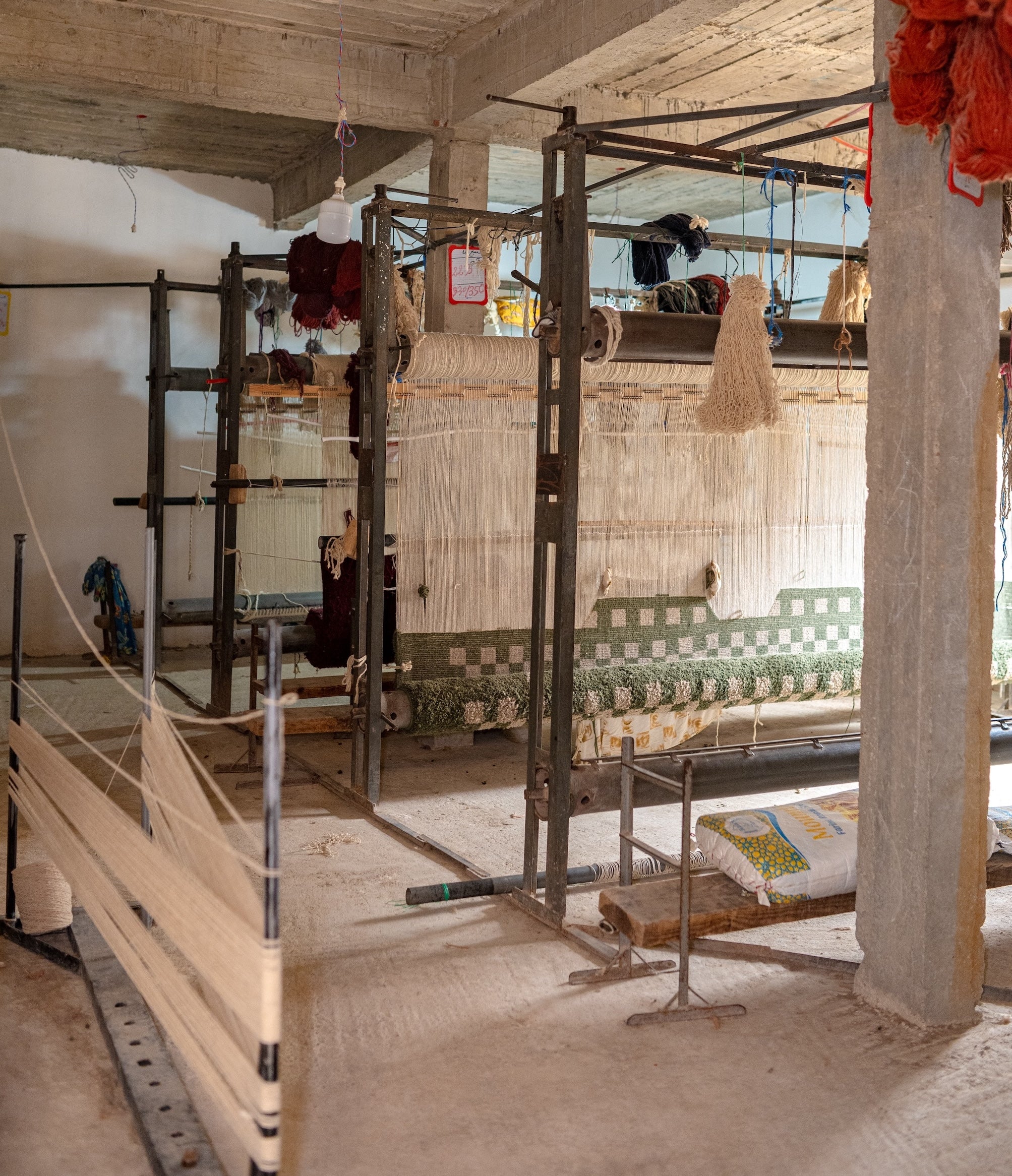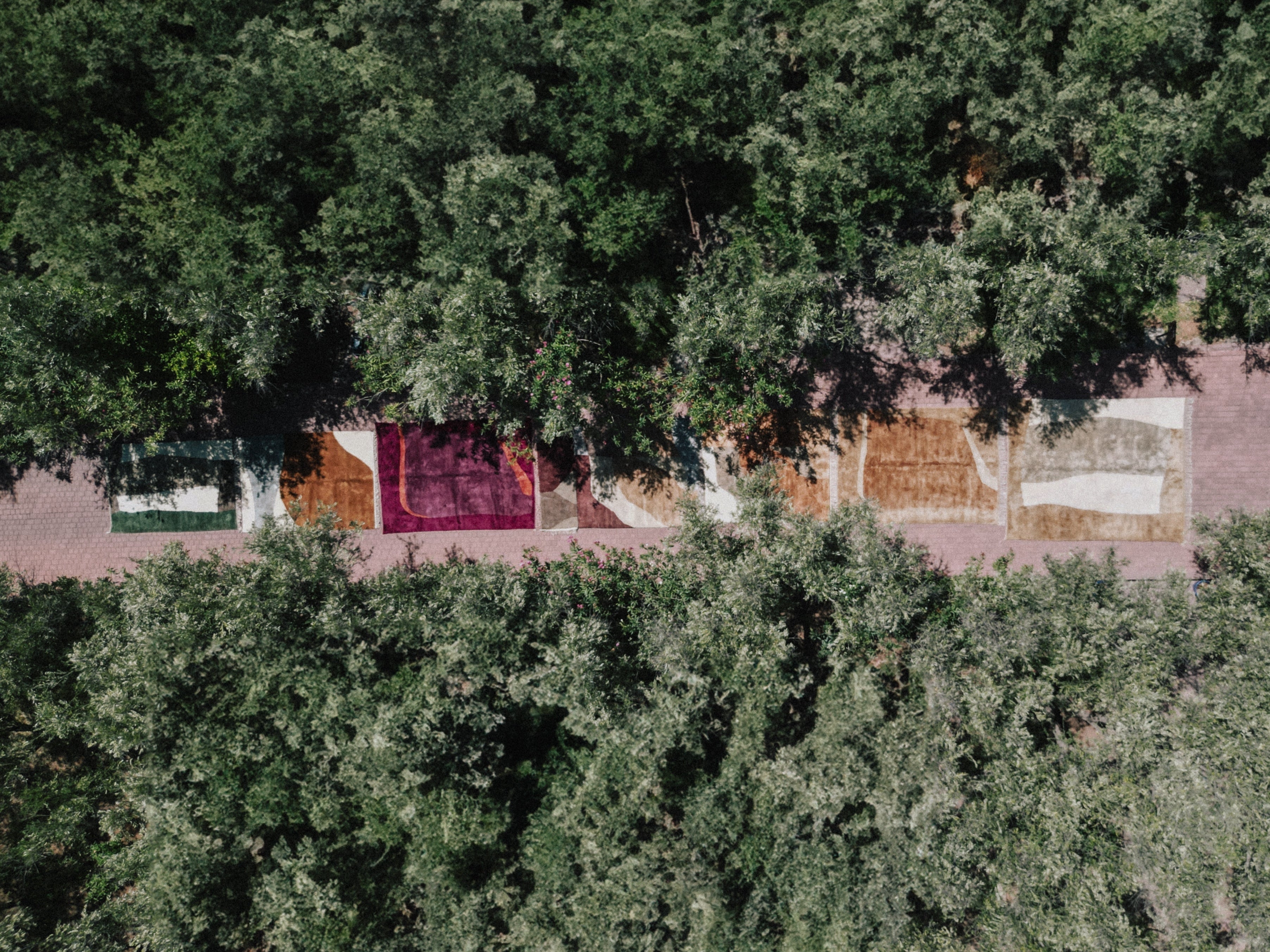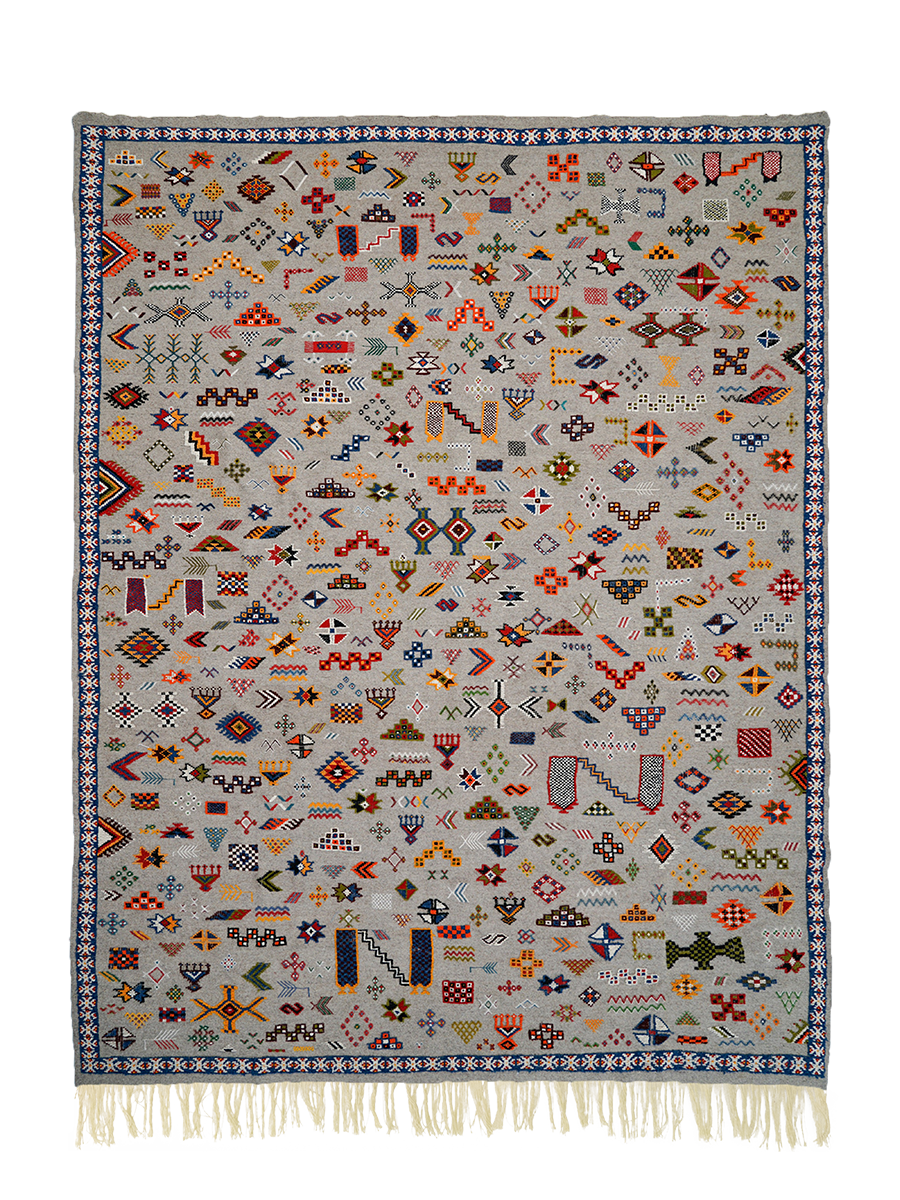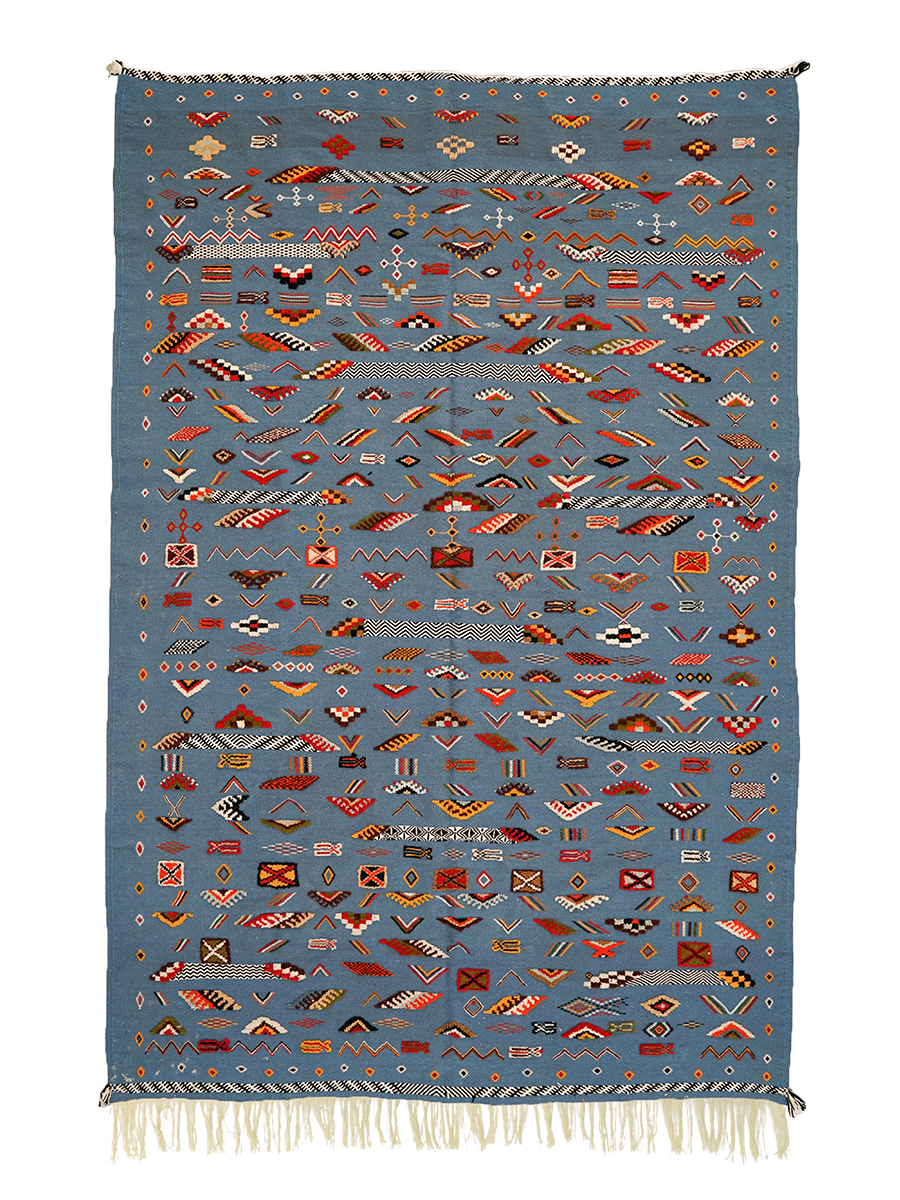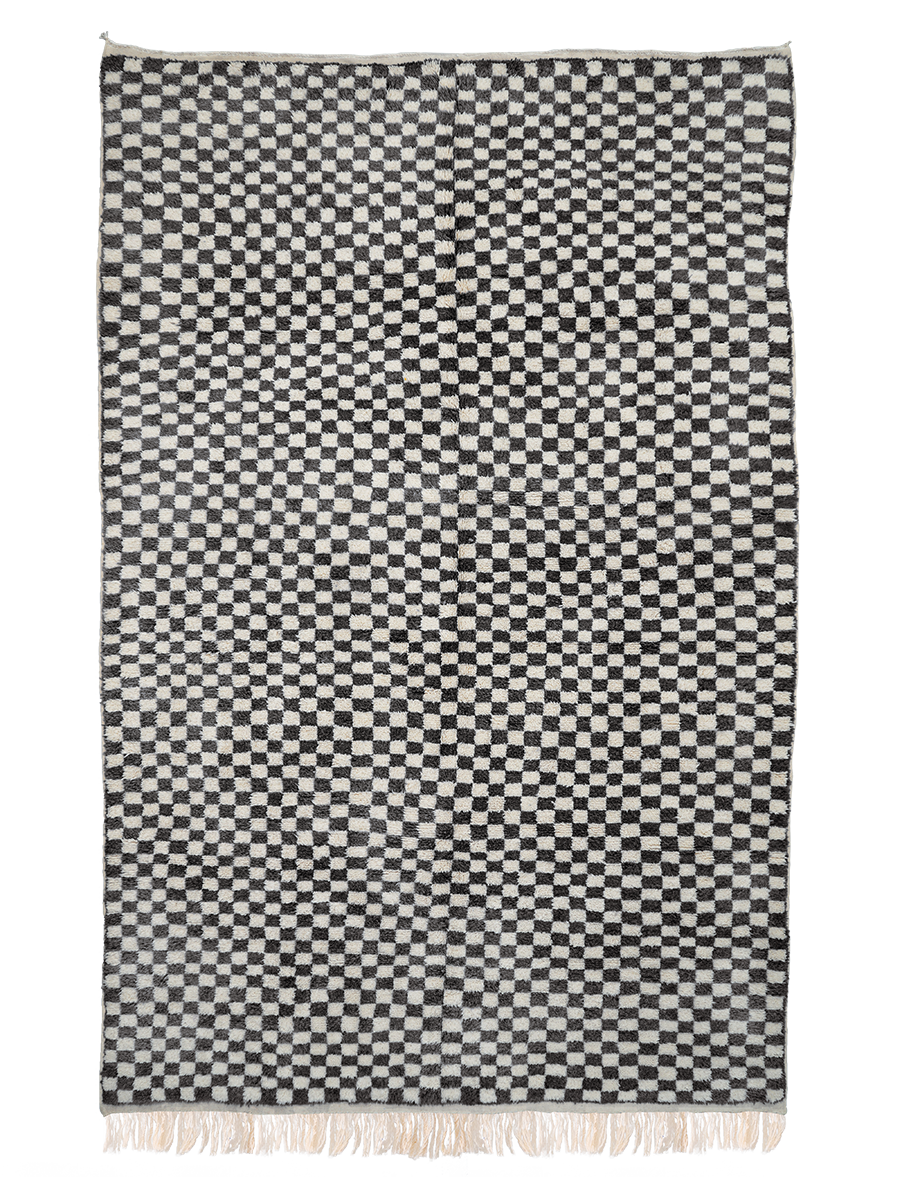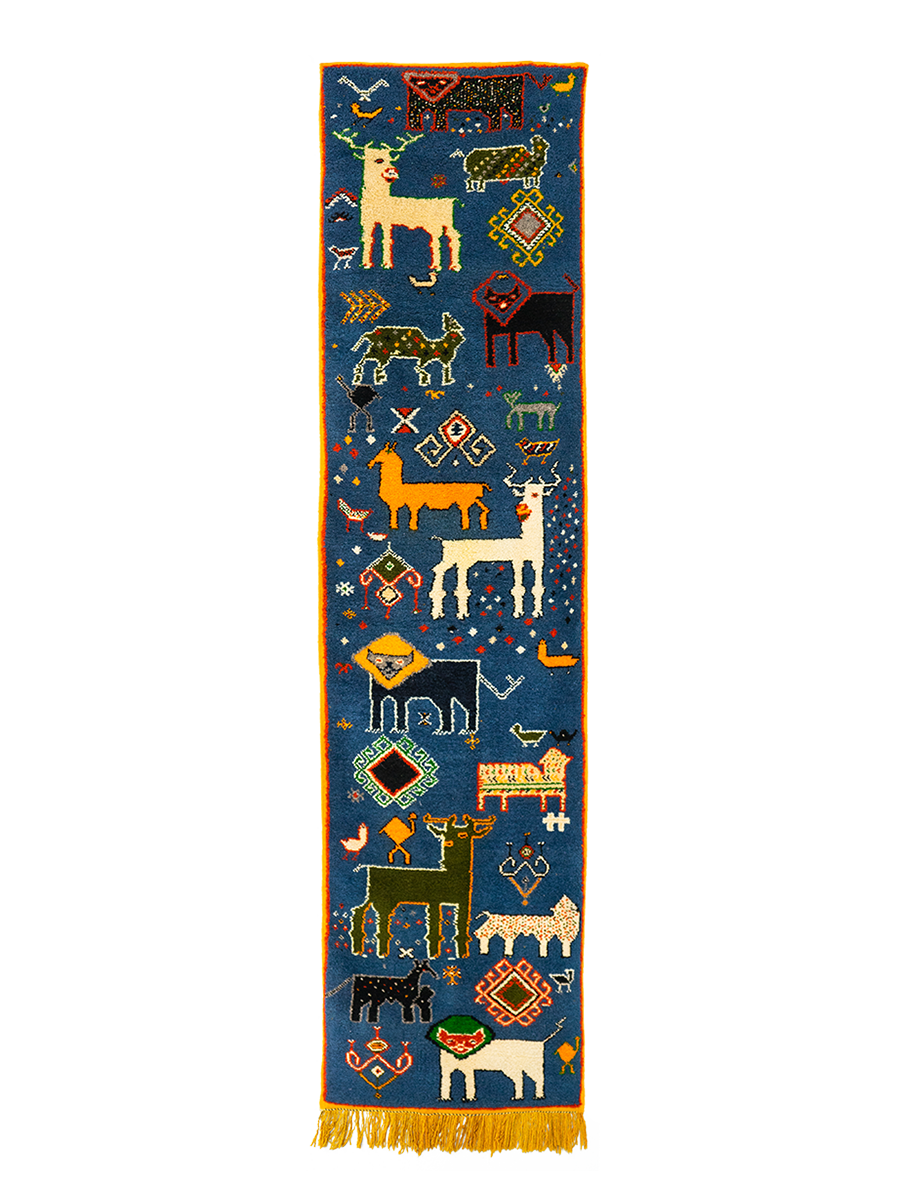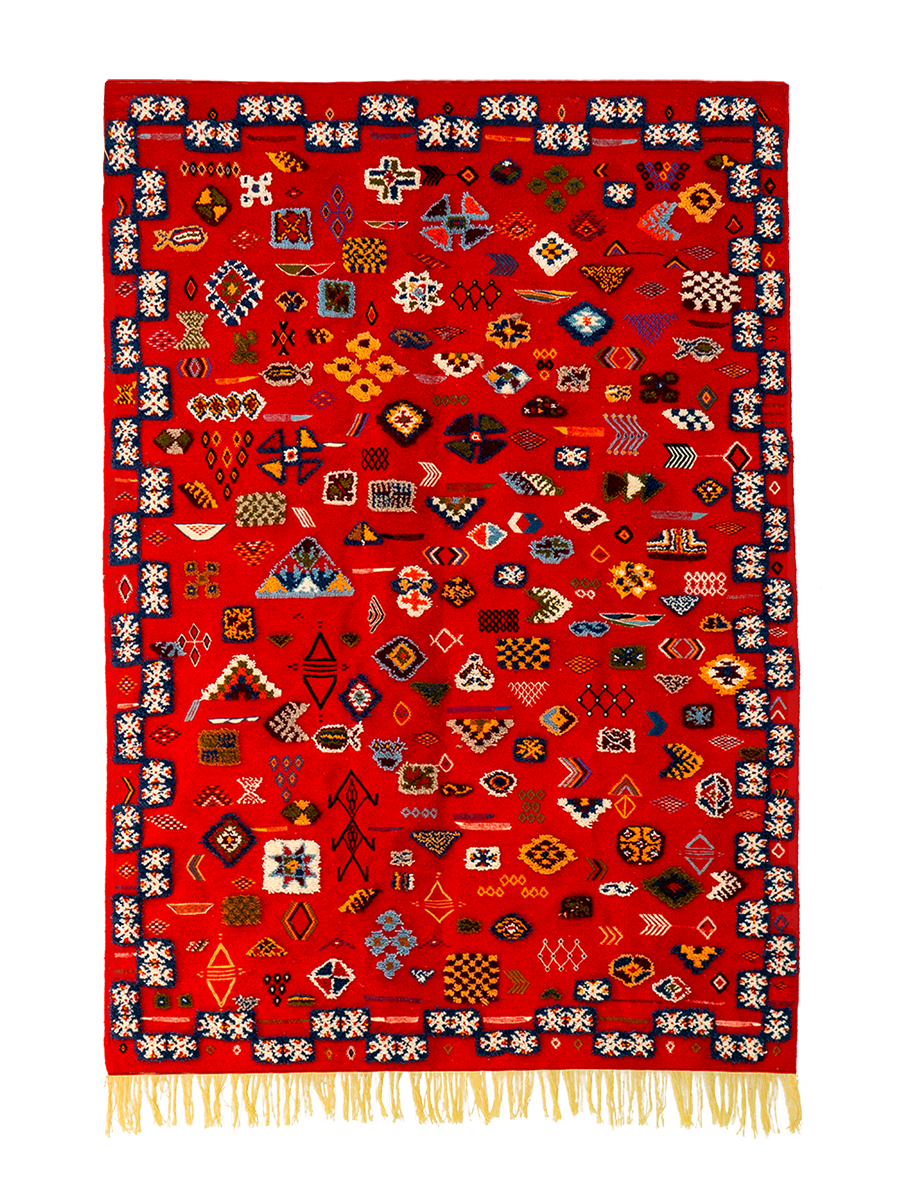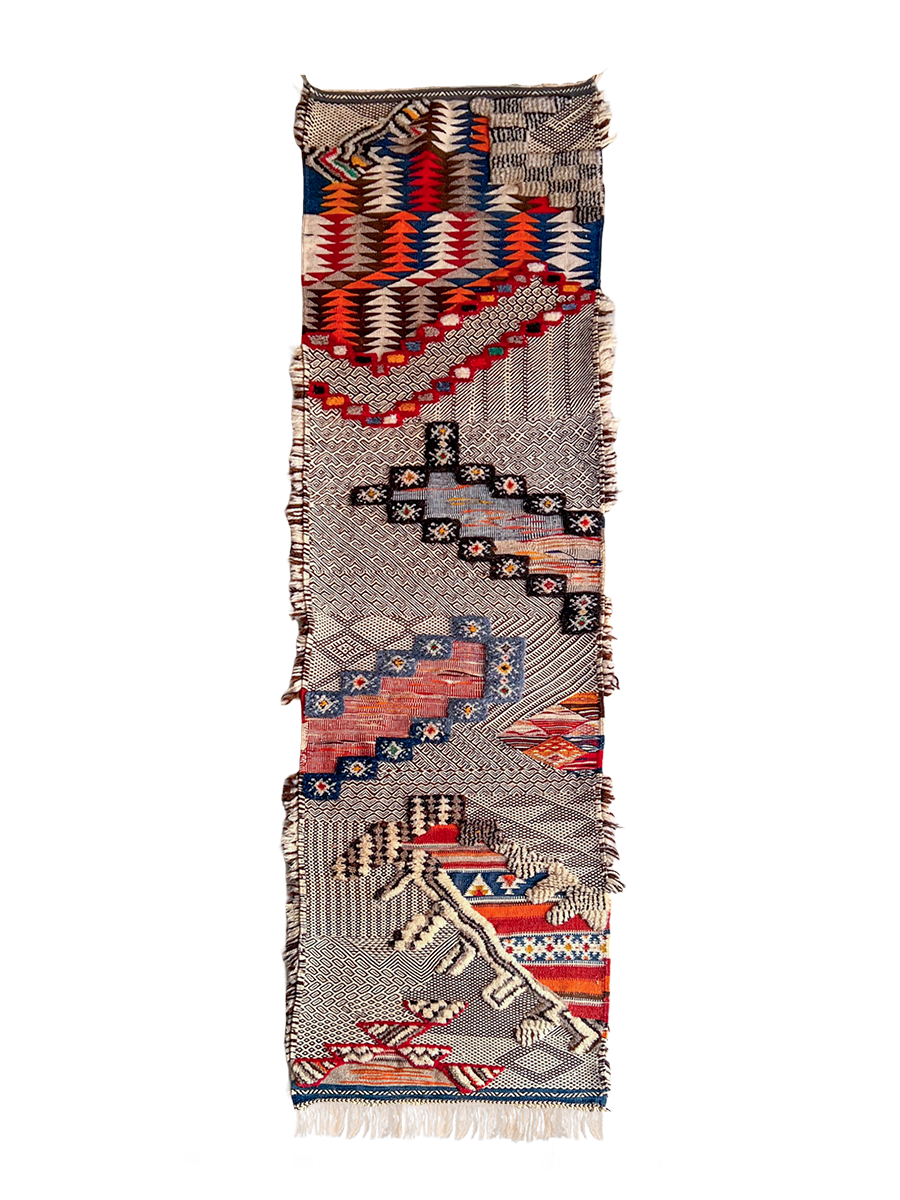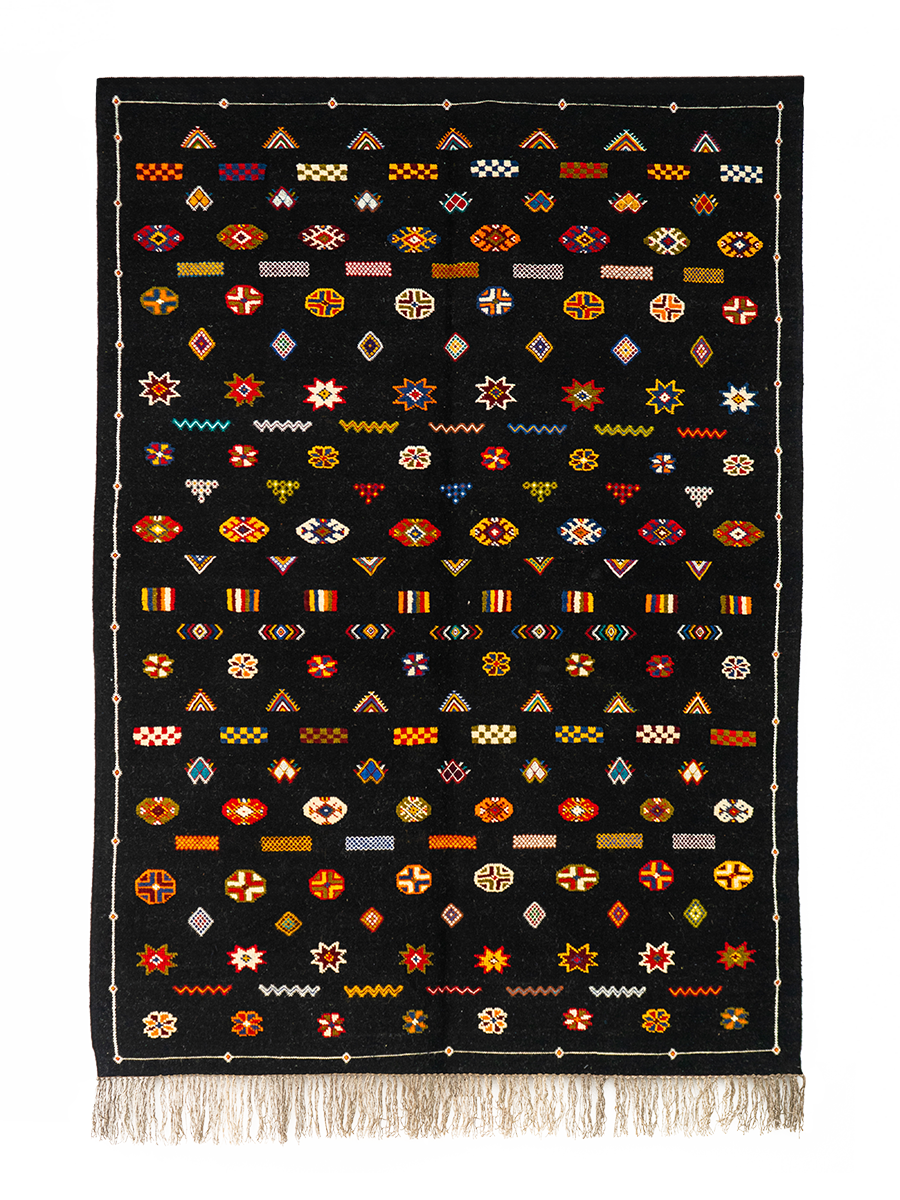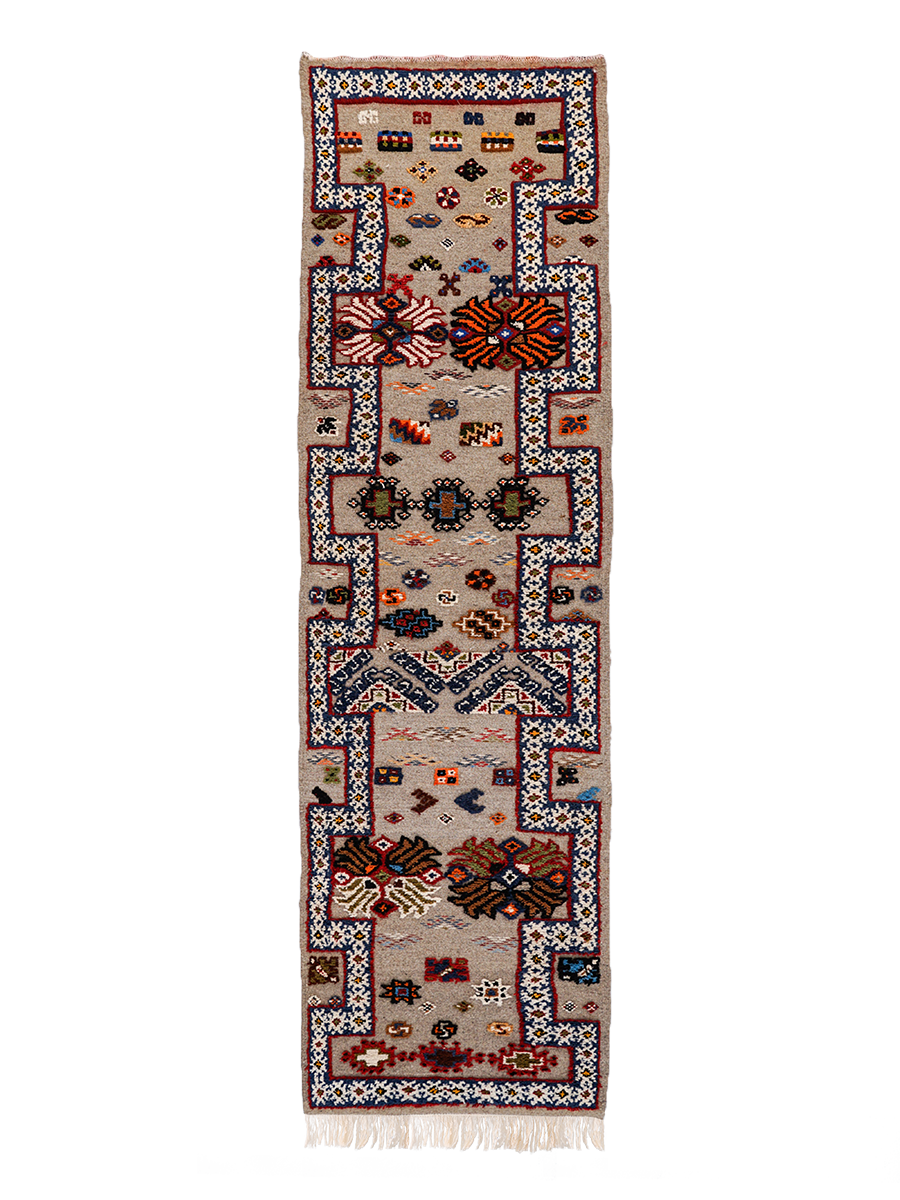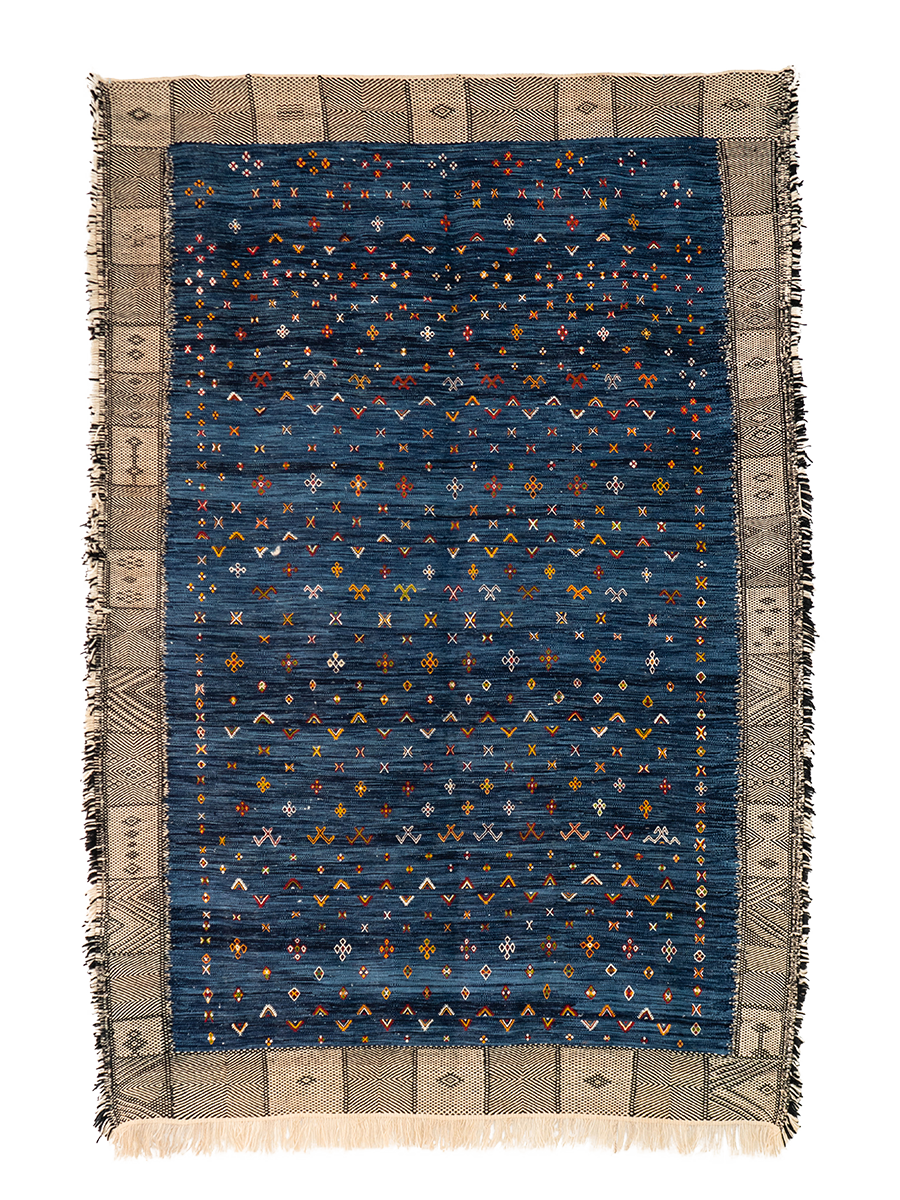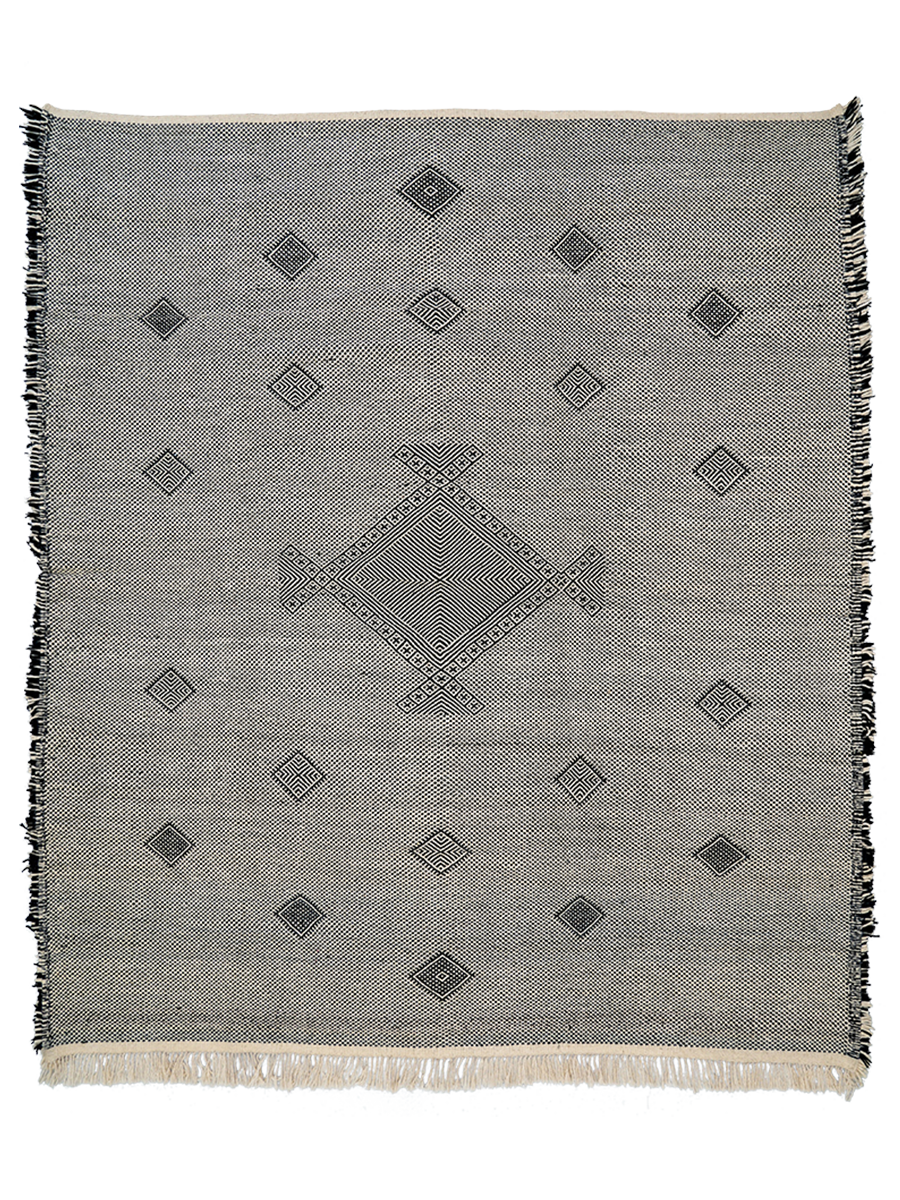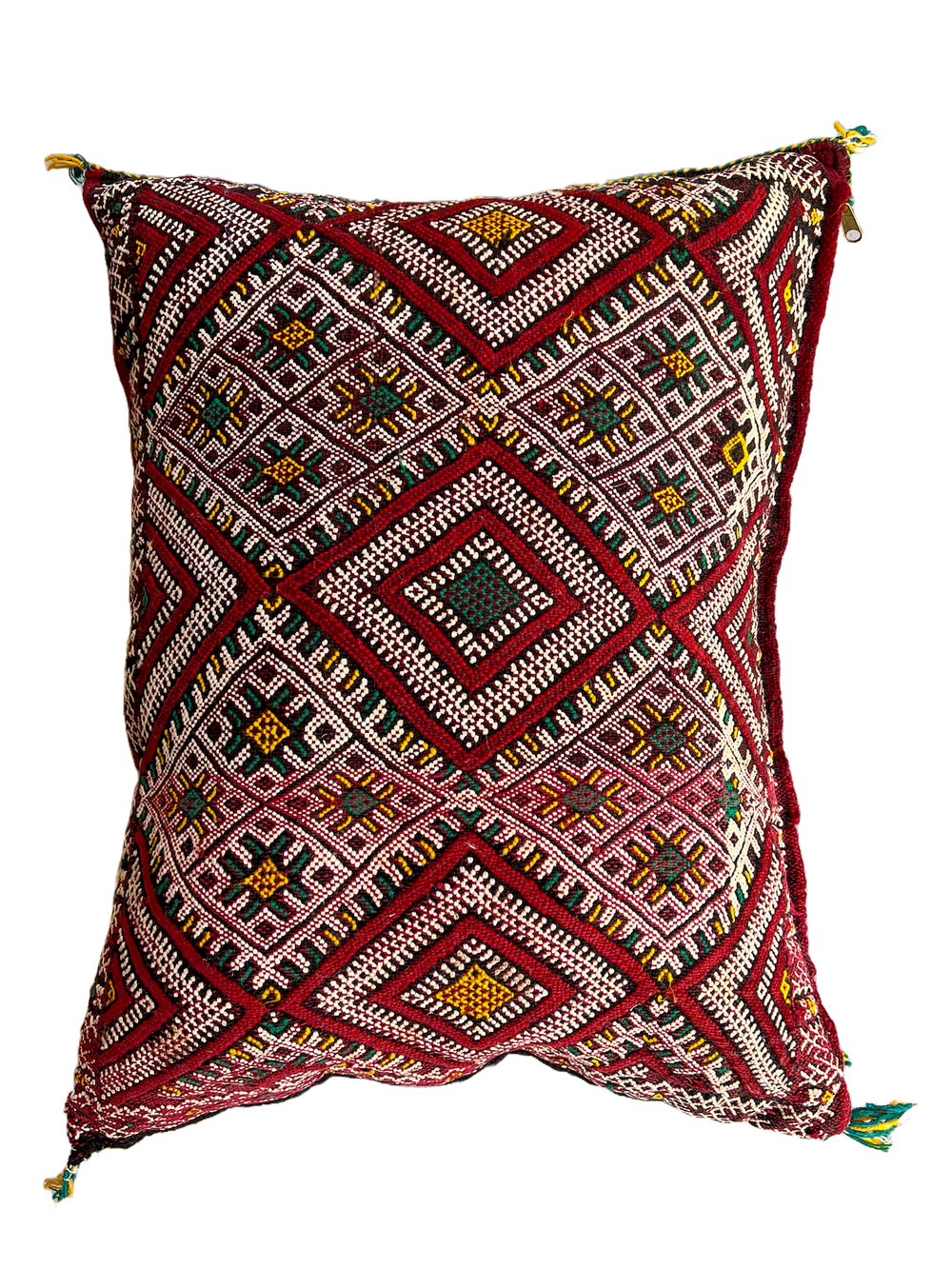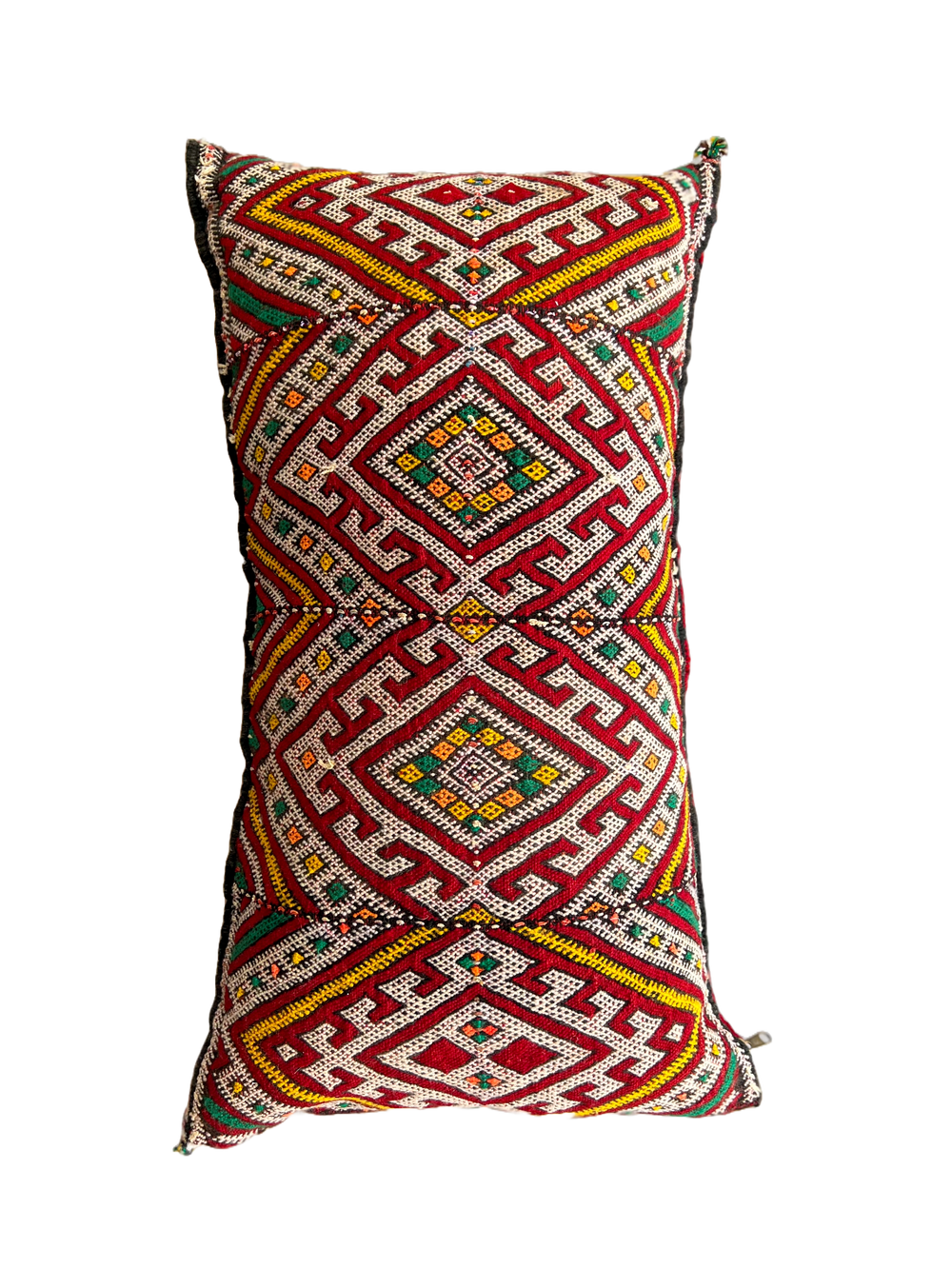Symbolism
At Salam Hello, we recognize not only the artisans making the rugs, but the rich symbolism behind each part of the storied craftsmanship.
Part of what makes Moroccan rugs so artful is that every step of the traditional weaving process has meaning. It’s a storied process rich in tradition that gives the textiles protective qualities that feel like magic. The finished pieces, in fact, have long been considered shields from the evil eye.
Gift of the Rug
It’s important to note that in Moroccan culture, the rug itself is a powerful symbol. In a tradition that is still practiced today, rugs are given as a gesture of appreciation and love in Moroccan culture. It is customary, for example, for a bride's family to either make and/or bring a rug as a gift for the groom's family.
Pictured is Fadma making a rug for her daughter's upcoming wedding.
Everything, of course, starts with the artisan, who holds centuries of tradition and craft in her hands. She is the guardian of the rug: As she knots the yarn and presses the weave with the hammer comb, she makes sure that evil doesn’t enter between the threads.

The Loom
What would the artisan be without her tool? Usually set up in the artisan’s home, the loom is the main instrument of the weaving process, constructed by hand with traditional rituals to protect the loom and ward off evil. For example, one common ritual involves an artisan breaking a piece of sugar against one side of the loom, and a date on the other.
The Prayer
The artisans start and finish weaving with a prayer called Istikara, so that God can allow the best intentions to enter the rug. 
The Wool
Every part of the rich artistic process of making a Moroccan rug is seeped in symbolism. Even the wool is considered lucky because it’s harvested without harm to the animals, washed, dried, and hand-spun.

The wool is usually dyed by hand with local herb, plant, and spice blends to create an array of colors. 
The Hammer Comb
Hammer combs, which are used to tightly press the weave of the rug throughout the process, are often carved with intricate designs to avert the evil eye from the weave.
The Patterns
One of the reasons the patterns on Moroccan rugs are so striking and unique is because, historically, the designs come entirely from the artisan’s imagination. The patterns and iconography might depict the Village an artisan lives in, religious symbols, or wishes for future generations. Our guide to the meaning behind the most popular design motifs is here.


